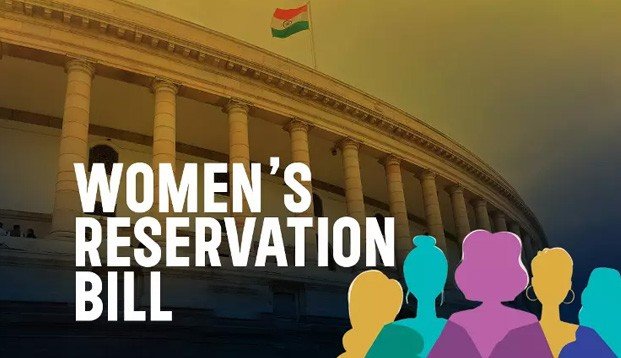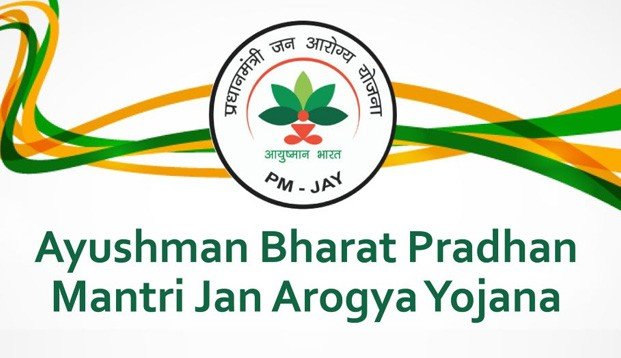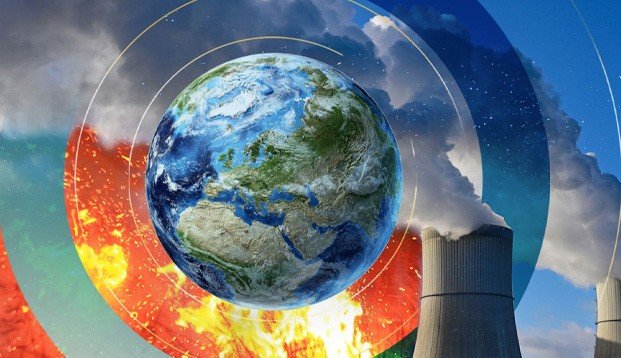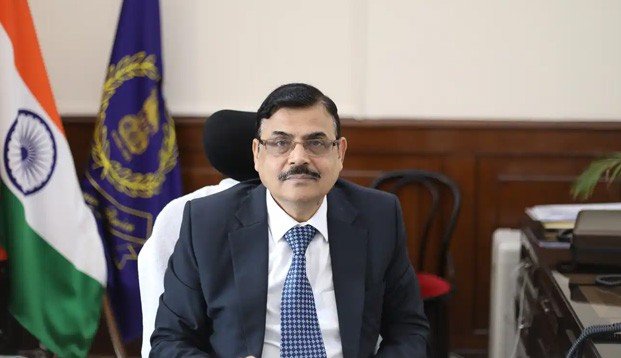12th February, 2024 (Monday)
| CONTENT LIST | ||
| Topics | Syllabus | |
| 1 | The Constitution (106th Amendment) Act, 2023 | GS.2: India Polity: Women in Politics |
| 2 | Lame Duck Session | GS.2: India Polity: Parliament |
| 3 | Ayushman Bharat-Pradhan Mantri Jan Arogya Yojana (AB-PMJAY) | GS. 2: Social Justice – Health Sector, Schemes in News |
| 4 | Why Focus on Climate Change? | GS.3: Ecology & Conservation – Climate Change |
| 5 | Central Board of Direct Taxes | GS.3: Indian Economy – Tax Regulating Bodies |
| 6 | IMF & World Economic Outlook | GS.3: Indian Economy: IMF’s Report in News |
THE CONSTITUTION (106TH AMENDMENT) ACT, 2023
Syllabus: GS.2: India Polity: Women in Politics
Why it’s in the News: Women’s political representation debates continue despite recent election outcomes.

About the Women’s Reservation Act, 2023
- The Constitution (106th Amendment) Act, 2023, aims to reserve one-third of all seats for women in various legislative bodies across India.
- Key Provisions:
- Reservation in Lok Sabha and State Legislative Assemblies:
- Seats reserved for women in Lok Sabha and State Legislative Assemblies, including those reserved for SCs and STs.
- Rotation of seats allocated for women after each delimitation process.
- Reservation in National Capital Territory of Delhi (NCT):
- Introduction of a new clause to reserve one-third of seats for women in the Legislative Assembly of NCT Delhi.
- Commencement and Duration:
- Reservation becomes effective after the publication of census data following the Act’s commencement.
- Reservation lasts for a 15-year period, extendable through parliamentary action.
- Parliament empowered to legislate periodic rotation of reserved seats for women.
- Current Representation and Need for the Act:
- Presently, women constitute a low percentage of total members in Lok Sabha and State Legislative Assemblies.
- Act addresses the need for enhanced gender representation in political bodies.
| Arguments in Favor | Arguments Against |
| Increased political representation for women. | Women are not a homogeneous group. |
| Potential for women’s leadership to bring positive change. | Perceived violation of equality principle and lack of merit-based competition. |
| Step towards decriminalization of politics. | Absence of separate OBC reservation and exclusion from Rajya Sabha and Legislative Councils. |
| Greater women’s vote share and breaking patriarchal norms. | Dependency on census and delimitation processes. |
| Improved performance at the local level and promotion of women-led development. | Concerns about proxy representation and restriction on voter choice. |
- Strategies for Implementation:
- Timely implementation through census and delimitation exercises.
- Capacity building and awareness-raising for effective mobilization of women leaders.
- Combating gender-based violence and harassment.
- Electoral reforms and intra-party democracy promotion.
- Strengthening women’s self-help groups and support for women’s agencies.
- Engaging young women in politics and debates at educational institutions.
- Conclusion:
- The Women’s Reservation Act, 2023, is expected to significantly contribute to the nation’s development by addressing socio-economic and political disparities through enhanced gender representation.
LAME DUCK SESSION
Syllabus: GS.2: India Polity: Parliament
Why it’s in the News: The 17th Lok Sabha session concluded, signaling the start of preparations for the upcoming general election.
What is a lame duck session of Parliament?
- Lame duck session refers to the last session of the old Lok Sabha after a new Lok Sabha has been elected as a result of the general elections.
- The term ‘lame ducks’ is used to refer to those members of the old house who could not be re-elected.
Meaning of “Lame Duck”
- The expression “lame duck” originally applied in 18th century Britain to bankrupt businessmen, who were considered as “lame” in the sense that the impairment of their powers rendered them vulnerable, like a game bird injured by shot.
- By the 1830s, the usage had been extended to officeholders whose service already had a known termination date.
- In USA, for instance, a President is considered a “lame duck” not only if he has been defeated for re-election, or after his successor has been elected, but also whenever he cannot be, or is known not to be, a candidate for reelection.
AYUSHMAN BHARAT-PRADHAN MANTRI JAN AROGYA YOJANA
Syllabus: GS. 2: Social Justice – Health Sector, Schemes in News
Why it’s in the News: The Centre plans to cover Anganwadi workers, helpers, and ASHAs under AB-PMJAY, with healthcare cards expected by month-end.

Key points discussed in the news
- AB-PMJAY offers up to ₹5 lakh/year for vulnerable families.
- ASHAs play a vital role in community health and COVID-19 response.
- India has over 13 lakh Anganwadi workers and 9.83 lakh ASHAs.
- AB-PMJAY covers 55 crore individuals, with gender equity in access to healthcare
About Ayushman Bharat-PMJAY
- Ayushman Bharat-Pradhan Mantri Jan Arogya Yojana (PMJAY) stands as the world’s largest health insurance scheme, fully financed by the government.
- Launched in 2018, it provides a sum insured of Rs. 5 lakh per family for secondary and tertiary care.
- The Health Benefit Packages encompass surgeries, medical and day care treatments, as well as the costs of medicines and diagnostics.
- Beneficiary Criteria:
- PMJAY operates as an entitlement-based scheme, targeting beneficiaries identified through the latest Socio-Economic Caste Census (SECC) data.
- The National Health Authority (NHA) has granted flexibility to States/Union Territories (UTs) to employ non-SECC beneficiary family databases with similar socio-economic profiles for tagging against the remaining (unauthenticated) SECC families.
- Funding Structure:
- Funding for the scheme follows a shared model: 60:40 for all states and UTs with their own legislature, 90:10 in Northeastern states and Jammu and Kashmir, Himachal Pradesh, and Uttarakhand, and 100% central funding for UTs without legislature.
- Implementing Agencies:
- The National Health Authority (NHA) has been established as an autonomous entity under the Society Registration Act, 1860, to ensure the effective implementation of PMJAY in collaboration with state governments.
- The State Health Agency (SHA) serves as the apex body of the State Government, responsible for the implementation of Ayushman Bharat-PMJAY within the respective state.
WHY FOCUS ON CLIMATE CHANGE?
Syllabus: GS.3: Ecology & Conservation – Climate Change

- Why it’s in the News: In 2023, record-breaking warming and climate disasters raised concerns about crossing the 1.5°C threshold. A recent study suggests Earth already surpassed it. Yet, uncertainties remain in understanding warming patterns and their implications, highlighting the need for accurate predictions to manage climate impacts effectively.
- Why Focus on Climate Change?
- Climate Impact on Public Health:
- Evidence indicates that climate change poses significant risks to public health, manifesting in extreme weather events and the proliferation of diseases like malaria and dengue.
- These threats affect communities worldwide, necessitating proactive measures.
- Projected Migration:
- By 2050, projections suggest that up to 200 million individuals could be displaced due to climate change, emphasizing the urgent need for mitigation and adaptation strategies to address environmental migration challenges.
- Inequality in Climate Effects:
- The impacts of climate change on human health are not uniformly distributed, with vulnerable populations disproportionately affected.
- Addressing climate change requires targeted interventions to protect the most vulnerable communities.
- Climate Impact on Public Health:
India’s Crucial Role:
- India, as the third-largest emitter of greenhouse gases, faces the dual challenge of rapid urbanization and climate-related vulnerabilities.
- Prioritizing sustainable urban development and creating employment opportunities aligned with environmental sustainability is imperative.
The UNFCCC Framework
- The United Nations Framework Convention on Climate Change (UNFCCC) is an international environmental convention that aims to lower atmospheric concentrations of greenhouse gases in order to prevent dangerous anthropogenic interference with the earth’s climate system.
- The UNFCCC, commonly known as the Earth Summit, the Rio Summit, or the Rio Conference, was ratified in 1992.
- Each participating nation is expected to make a commitment to stabilize greenhouse gas emissions under this framework.
- A Conference of the Parties (COP) is an annual gathering of the 197 parties to the convention to review the status of efforts to combat climate change.
- Top of Form
- Objective of UNFCCC:
- It aims to stabilize atmospheric greenhouse gas concentrations to prevent harmful interference with the climate system.
- It emphasizes the importance of achieving this objective while ensuring ecosystem resilience, food security, and sustainable economic development.
- Classification of Parties:
- With 197 parties to the UNFCCC, including UN members, observer states, and organizations, the classification system categorizes nations into Annex I, Annex II, Annex B, Least Developed Countries (LDCs), and Non-Annex I groups.
- These classifications determine roles and responsibilities in climate action and support mechanisms for vulnerable nations.
- Structural Framework:
- The UNFCCC operates through the Conference of the Parties (COP) as its supreme decision-making body.
- COP meetings, along with subsidiary bodies like the Subsidiary Body for Implementation (SBI) and the Subsidiary Body for Scientific and Technological Advice (SBSTA), drive the global climate agenda.
Key Highlights from COP28
- Loss and Damage Fund:
- At COP28, member countries agreed to operationalize the Loss and Damage (L&D) fund to compensate nations grappling with climate change impacts.
- The fund, hosted by the World Bank, aims to support vulnerable countries and communities affected by climate-induced loss and damage.
- Global Stocktake Text:
- The fifth iteration of the Global Stocktake (GST) text proposes comprehensive measures to limit global temperature rise to 1.5 degrees Celsius.
- These measures include accelerating renewable energy deployment, phasing out fossil fuel subsidies, and enhancing methane emissions reduction efforts.
- India’s Position:
- India’s stance at COP28 underscores the importance of balancing developmental needs with climate imperatives.
- While advocating for continued coal use to meet developmental goals, India commits to transitioning away from fossil fuels in a just and equitable manner.
- Global Renewable and Energy Efficiency Pledge:
- Signatories at COP28 pledged to triple the world’s renewable energy generation capacity by 2030 and double the global average annual rate of energy efficiency improvements.
- These commitments aim to accelerate the transition to a sustainable energy future.
India’s Initiatives at COP28
- Global River Cities Alliance (GRCA):
- Led by India’s National Mission for Clean Ganga (NMCG), the GRCA aims to promote sustainable river-centric development and climate resilience across 275+ global river-cities.
- It facilitates knowledge exchange and best practices dissemination to address climate challenges.
- Green Credit Initiative:
- India’s Green Credit Initiative, launched at COP28, incentivizes voluntary environmental activities such as water conservation and Afforestation among corporations and private entities.
- This initiative aims to drive climate action at the grassroots level.
Conclusion
- Addressing climate change necessitates a multi-faceted approach, involving international cooperation, policy innovation, and grassroots initiatives.
- COP28 highlights the collective commitment to combating climate change and underscores the urgency of decisive action to secure a sustainable future for all.
CENTRAL BOARD OF DIRECT TAXES
Syllabus: GS.3: Indian Economy – Tax Regulating Bodies
Why it’s in the News: CBTD reports 20.25% rise in India’s net direct tax collections to ₹15.60 lakh crore, surpassing last year’s figures.

Central Board of Direct Taxes (CBDT) chairman Nitin Gupta. | Photo Credit : Mint
About CBDT
- The Central Board of Direct Taxes (CBDT) is a statutory authority functioning under the Central Board of Revenue Act, 1963.
- It is an integral part of the Department of Revenue in the Ministry of Finance.
- Background
- The origins of the Central Board of Revenue trace back to the Central Board of Revenue Act, 1924, which established it as the apex body responsible for tax administration.
- Initially, this Board administered both direct and indirect taxes.
- However, as the scope of tax administration expanded, the need for division arose. Consequently, on 1st January 1964, the Central Board of Revenue was divided into two separate entities: the Central Board of Direct Taxes and the Central Board of Excise and Customs.
- This division was formalized under Section 3 of the Central Boards of Revenue Act, 1963.
- Functions
- The CBDT’s primary functions encompass the formulation of policies, handling matters related to the levy and collection of direct taxes, and overseeing the entire functioning of the Income Tax Department.
- Additionally, the CBDT proposes legislative changes in direct tax enactments and recommends adjustments in tax rates and structures in alignment with governmental policies.
IMF & WORLD ECONOMIC OUTLOOK
Syllabus: GS.3: Indian Economy: IMF’s Report in News
Why it’s in the News: IMF’s November 2023 report on India urged better data quality. January 2024 Outlook predicts GDP growth slowdown: 6.7% (2023-24), 6.5% (2024-25).
About IMF & It’s World Economic Outlook Report
- Origins and Mandate
- The International Monetary Fund (IMF) was established alongside the World Bank post-World War II, stemming from the Bretton Woods Conference in the US.
- This historic event birthed what are now known as the “Bretton Woods twins.”
- Formally established in December 1945, the IMF operates under the governance and accountability of its nearly global membership of 190 countries.
- Notably, India became a member on 27th December 1945.
- Mission and Evolution
- The IMF’s core mission is to safeguard the stability of the international monetary system, encompassing exchange rates and international payments crucial for global transactions.
- In 2012, the Fund’s mandate underwent an expansion to include macroeconomic and financial sector issues vital to global stability.
- Reports by the IMF
- Among the IMF’s notable reports are
- The Global Financial Stability Report and
- The World Economic Outlook (WEO).
- Among the IMF’s notable reports are
- World Economic Outlook (WEO)
- The World Economic Outlook (WEO) is a comprehensive report by the International Monetary Fund (IMF) that presents vital statistics including output, inflation, employment, fiscal balances, and debt for member countries.
- This report offers projections on global growth, provides a snapshot of the current state of the global economy, and emphasizes significant developments.
- Published biannually in April and October, the WEO draws upon data gathered from consultations with member countries’ governments conducted by the IMF.
- Additionally, the IMF releases two supplementary WEO updates each year, three months following the publication of the main WEO report.


